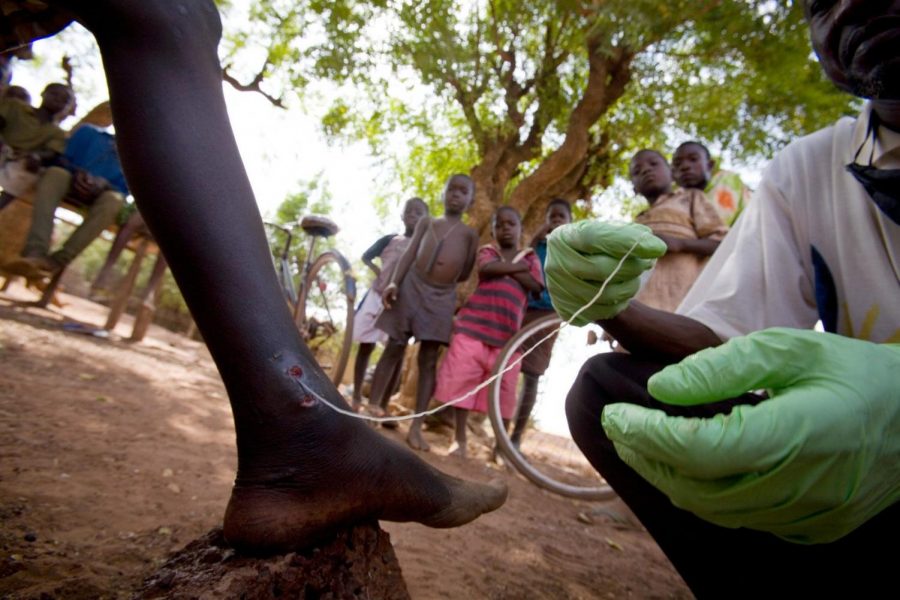Bye, bye, wormie
Guinea worm eradication ongoing, experts and doctors optimistic
A doctor in Northern Ghana extracts a guinea worm from a child’s leg. Although the parasite is difficult to treat, prevention is as easy as filtering water before drinking it. Organizations like the Carter Center are working to make the worm extinct over the next several years. (NPR photo)
January 11, 2019
First and foremost, I’d like to print a correction: the caption on the image in the previous edition claimed the 1918 flu killed ⅓ of the world population; this is false. It infected ⅓ of the world population.
My most recent columns have been a little doom-and-gloom-y. So let’s take a moment to appreciate one of the victories of medicine: the guinea worm.
This parasite is contracted by drinking water tainted with larva. It remains dormant for about a year as it grows. An adult guinea worm, while very thin, can reach almost a meter in length. It works its way along beneath the skin toward the foot, where it settles and causes swelling, blisters, and intense pain. People often try to soothe the affected region by soaking it in water, which triggers the worm to expel its eggs through the blisters. Then someone drinks that water, and the cycle continues.
It rarely causes death, but debilitating pain can persist for months, and movement through joints can in some cases cause permanent disability. In addition, the openings in the skin are vectors for secondary infection. There are no vaccines or antiparasitics to treat it; treatment generally consists of spooling the worm around a small stick over several weeks, which is exactly as unpleasant as it sounds–though it can be surgically removed if diagnosed before the blister forms. People can be bedridden for a month with the pain and secondary infections.
But I promised this would be a happy column. So here it is: the human guinea worm is nearing its end. Once endemic across Africa and parts of Asia, it’s now limited to Ethiopia, Sudan, and Chad, There were 30 cases worldwide in 2017 according to the Carter Center’s Guinea Worm Eradication program, down from 3.5 million in 1986.
This is because, despite the lack of vaccines or simple cures, guinea worm infection is easy to prevent. Filtering water through inexpensive nylon mesh or even cloth can be enough to remove the larvae, and not soaking the inflamed parts in drinking water prevents sources from being contaminated. Combine these two easy, fast, cheap practices and all it takes is a little education to show people how to prevent it.
If all goes well in the next few years, the guinea worm may follow in smallpox’s footsteps.

